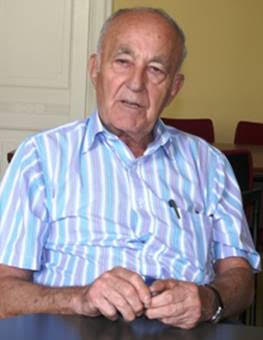
THE VOICE OF INTERNATIONAL LITHUANIA
|
VilNews has its own Google archive! Type a word in the above search box to find any article.
You can also follow us on Facebook. We have two different pages. Click to open and join.
|
Author Archive
- Posted by - (0) Comment

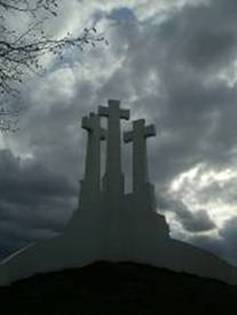
HILL OF THREE CROSSES, VILNIUS
By Aage Myhre
aage.myhre@VilNews.com
Easter Sunday 1991 represents one of the most magical moments I've ever experienced in my life. The date was the 31st of March, and I wandered through the Old Town of Vilnius together with the one who would later become my wife. A couple of months earlier I had been standing with Professor Vytautas Landsbergis in the Lithuanian Parliament looking out at the Soviet military forces and the tens of thousands of Lithuanians who were there with their bonfires and primitive tools to protect the Parliament. I had seen the coffins of the thirteen brave individuals standing outside the Cathedral in Vilnius, and I had seen how a whole people gathered in grief and despair over the USSR's new assault on this small nation and the innocent civilians who so bravely sacrificed their lives for their home country.
- Bookmark :
- Digg
- del.icio.us
- Stumbleupon
- Redit it
- Posted by - (3) Comment
Saulene’s
|
|

Text: Saulene Valskyte
Spring has come, the sun is shining, birds are singing, at least that's what it should be like. In Lithuania Easter weather swings from blizzard to burning sun, but regardless to that is this the most colorful celebration of the year. As all Christian celebrations Easter traditions here are intertwined with paganism, Easter in particulary were a pagan celebration of awakening nature.
The Easter celebration starts a week before Easter Day, on Palm Sunday, when people are gathering in churches with beautiful, colorful, original “palms”. In Lithuania every region have there own palm making traditions, usually palm base are the juniper twig. During the church service the palms are being blessed. Afterwards people participate in a traditional Palm Sunday ritual, beating each other with the blessed palms, wishing each other health and strength. Today this is mostly a children game, but in old days everyone were doing it, singing "It's not me, it's palm what beats you, there's Easter in a week, and you will get an Easter egg".

Just as with Christmas, the week before Easter is supposed to be meatless. Although this tradition is not very popular these days, at least the last few days people should try to eat less meat or not at all. This means that herring and other fish courses should be the most common ingredients on the table.
Very important is to clean everything well before Easter Day. Traditionally Holy Thursday was the "cleaning day", but as people get more and more busy, Easter Saturday has become a more convenient day for all cleaning jobs.
The day before Easter is for decorating eggs. These are the two most popular ways to do that:
With wax
Melt some wax in a dish and make some ornaments on the egg with the tip of the needle or crochet and wait until the wax gets cold and hard. Decorate the egg with paint and when it gets dry scrub the wax off.
With onion shells
Boil eggs in water with lots of onion shells. You can also decorate it with some plants print. To do that put a leaf or a blossom on the egg and lace it up with a thread, then put it in something tight (most widely used are stockings) and then boil in with the shells.
When I was a child, we were decorating eggs with color pencils, because Easter eggs are always more for children.


The most important meal on Easter Day is a late breakfast after a mass at church. Family members who don't go to church, stay home to prepare the festive table, covered with a white tablecloth and the table decorated with a white lamb figurine.
On a traditional Easter table you will find traditional Lithuanian dark bread, big pork roast, special Easter pie and Easter eggs.
The meal starts with a short prayer, and the elder of the family blesses the table with blessed water from church, then hands out one Easter egg to everyone. The egg fight begins! The egg fight starts when the people around the table are hitting the ends of each other’s eggs until they crack. Then the winners play with the other winners until only one egg is left un-smashed. The winner egg owner should be healthy all year long.


After the egg fight is over, the meal continues with a big pork roast. In some regions the pork head was the main course of the meal. Also very popular is meat jelly with some vegetables. To make it more festive, some people set it in egg shell to make it look as an Easter egg.
After the meal mother the Easter eggs are equally divided for all the children and they go to roll eggs. Eggs are rolled from a gutter or a plank, with the point to hit each other’s eggs that already have rolled down the slide.
Grownups, who went to the church in the morning, usually go to sleep after this, as they had a very early morning. People don't visit each others on the first Day of Easter, except if they have a neighbor unable to walk. Then every neighbor should visit the valetudinarian with some presents from their Easter tables.
Second Day of Easter is for visiting friends and neighbors and exchanging Easter eggs.
Have a nice, sunny and very colorful Easter with your families, let your Easter eggs be the strongest and most beautifull of all.

Happy Easter from Saulene!
- Bookmark :
- Digg
- del.icio.us
- Stumbleupon
- Redit it
- Posted by - (0) Comment
Saulene’s
|
|

Text: Saulene Valskyte
Spring has come, the sun is shining, birds are singing, at least that's what it should be like. In Lithuania Easter weather swings from blizzard to burning sun, but regardless to that is this the most colorful celebration of the year. As all Christian celebrations Easter traditions here are intertwined with paganism, Easter in particulary were a pagan celebration of awakening nature.
The Easter celebration starts a week before Easter Day, on Palm Sunday, when people are gathering in churches with beautiful, colorful, original “palms”. In Lithuania every region have there own palm making traditions, usually palm base are the juniper twig. During the church service the palms are being blessed. Afterwards people participate in a traditional Palm Sunday ritual, beating each other with the blessed palms, wishing each other health and strength. Today this is mostly a children game, but in old days everyone were doing it, singing "It's not me, it's palm what beats you, there's Easter in a week, and you will get an Easter egg".
- Bookmark :
- Digg
- del.icio.us
- Stumbleupon
- Redit it
- Posted by - (0) Comment
- Bookmark :
- Digg
- del.icio.us
- Stumbleupon
- Redit it
- Posted by - (1) Comment
VIC
VILNIUS INTERNATIONAL CLUB
New board for
Vilnius International Club
|
NAME/COUNTRY/ |
PHOTO |
PERSONAL INFORMATION |
|
|
Aage Myhre |
|
Telephone |
+370 699 33 222 |
|
|
|||
|
Web page 1 |
|||
|
Web page 2 |
|||
|
Info |
VilNews Editor-in-Chief. Has lived in Lithuania for more than 20 years. M.Sc. of Civil Engineering (dept. of Architecture) + Architectural Psychology, Strasbourg, France. Journalist, editor, photographer, architect, developer, philanthropist. |
||
|
Zilvinas Beliauskas |
|
Telephone |
+370 687 76 625 |
|
|
zilvinas@zilvinas.be ; zilvinas.beliauskas@vilnius-international-club.com ; zilvinas.beliauskas@vilnews.com ; |
||
|
Web page 1 |
|||
|
Web page 2 |
|||
|
Info |
Psychologist. Psychology teacher, Mykolas Romeris university - http://zilvinasb.home.mruni.eu/. Research fellow, Lithuanian Culture Research Institute - http://lkti.lt/en/aboutus . Manager of cultural activities, Vilnius Jewish Public Library - http://vilnius-jewish-public-library.com/ . |
||
|
Torben Pedersen |
|
Telephone |
+370 685 16 060 |
|
|
|||
Web page 1 |
|
||
Info |
Deloitte Partner (retired). VilNews Board member. Danish Chamber of Commerce Board member. Has lived in Lithuania for 18 years. M.Sc. In Auditing, State Authorized Public Accountant (Denmark). |
||
|
Kristina Janusauskaite |
|
Telephone |
+370 612 16 789 |
|
|
|||
|
Web page 1 |
|
||
|
Info |
Advocate, Law Firm BLS Lithuania, Vilnius; Lecturer, Vilnius University Law School; Arbitrator, Vilnius Commercial Arbitration Court; External Consultant, World Intellectual Property Organization (Geneva) |
||
|
Andrius Koncius |
|
Telephone |
+370 699 43 449: +370 5 21276 10 (office) |
|
|
|||
|
Web page 1 |
|||
|
Web page 2 |
|||
|
Info |
Managing Director of UAB COWI Lietuva. |
||
|
Amelija Rudenko |
|
Telephone |
+370 699 19 135 |
|
|
|||
Web page 1 |
|||
Info |
General Manager of UAB "E.L.L. Nekilnojamas turtas", lecturer at www.ttvam.lt (Hotel and lodging general management), former professional in hospitality industry (10-year experience in international hotel business), author of the book "Viesbuciu darbo organizavimo pagrindai". |
||
|
Audrius Sakalauskas |
|
Telephone |
+ 370 698 38 156 |
|
|
|||
|
Web page 1 |
|
||
|
Web page 2 |
|
||
|
Info |
Freelance business development consultant, food & beverage expert, tea taster |
||
|
David Telky |
|
Telephone |
+370 865 44 592 |
|
|
|||
|
Web page 1 |
|||
|
Info |
Clothing manufacturer in Lithuania for 20 years. |
||
Web page for VIC: http://vilnius-international-club.com/
- Bookmark :
- Digg
- del.icio.us
- Stumbleupon
- Redit it
Lithuania approves Jewish compensation
- Posted by - (0) Comment
![]()
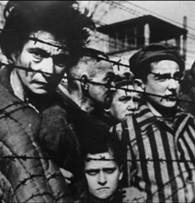
Lithuania on Wednesday approved a special fund to manage compensation for Jewish property seized by Nazi Germany during World War II and then kept by the Soviet regime.
"This is a very important decision after 15 years of discussions" between the government and the Jewish community, Prime Minister Andrius Kubilius told reporters.
The move allows the distribution of 128 million litas (37 million euros, $49 million), which the Baltic state pledged to earmark in 2013-2023 under a law adopted last year.
"Such decisions are important for all of us, for historic justice, and we have made a big step in realizing our moral responsibility towards history, sometimes difficult and tragic history," said Kubilius.
- Bookmark :
- Digg
- del.icio.us
- Stumbleupon
- Redit it
![]()
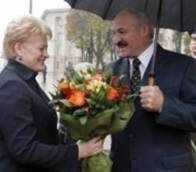
D. Grybauskaitė and A. Lukashenka
Belarusians and Lithuanians have a long common history which started long before the Grand Duchy of Lithuania 500 years ago. Two nations followed clearly divergent paths only after the collapse of the Soviet Union. When Lukashenka came to power, he recognised the state border of Lithuania and thus prevented the main source of possible tension between two countries.
Lithuania hosts many Belarusian exile organisations including the European Humanities University but remains cautious about economic sanctions. It supports liberalisation of visa regime for Belarusians but was guilty of leaking information to Belarusian authorities which led to imprisonment of human rights activist Ales’ Bialiatski. Two countries cannot agree on several issues, including Belarusian nuclear power plant, but overall their relations remain remarkably pragmatic.
History of Peaceful Coexistence
For more than a half of millennium, Belarusian and Lithuanian people have peacefully lived together in the Grand Duchy of Lithuania and the Polish-Lithuanian Commonwealth. This experience of coexistence continued after the Russian Empire had annexed their lands, with many Belarusians studied at the Vilnius University.
- Bookmark :
- Digg
- del.icio.us
- Stumbleupon
- Redit it
- Posted by - (1) Comment
Fleeing from domestic famine in the late 1800's:
Hordes of Lithuanians
came to Pennsylvania
to work in coal mines
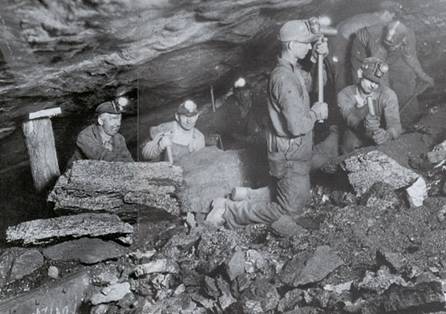
Large numbers of Lithuanians first came to the United States in 1867-1868 after a famine in Lithuania, at that time a part of the Russian Empire after Saint Petersburg had annexed the Lithuanian lands piece by piece between 1772 and 1795 in the partitions of the Polish-Lithuanian Commonwealth between Prussia, (later part of Germany), the Austrian-based Habsburg Monarchy and Czarist Russia, which ceased to exist in 1917-1918.
The beginnings of industrialization and commercial agriculture in the Russian Empire as well as a population boom that exhausted available land transformed Lithuanian peasant-farmers, once considered an immovable fixture of the land, into migrant-labourers. The pressures of industrialization drove numerous Lithuanian peasants to emigrate to the United States continuing until the outbreak of the First World War. This first wave of Lithuanian immigrants to the United States ceased when the US Congress passed the Emergency Quota Act in 1921, followed by the Immigration Act of 1924 driven by xenophobic anti-immigrant attitudes against the newcomers from Eastern Europe. The Immigration Act of 1924 was aimed at restricting the Eastern and Southern Europeans who had begun to enter the country in large numbers beginning in the 1890s.
During the late nineteenth and early twentieth centuries, an estimated 300,000 Lithuanians journeyed to America. This number is hard to document fully because census records did not officially recognize Lithuanians as a separate nationality until the twentieth century, and the country's people may have been reported as Russian, Polish, or Jewish.
Lithuanians differed from most immigrant groups in the United States in several ways. First, they did not plan to remain permanently and become "Americanized." Instead their intent was to live in the US temporarily to earn money, invest in property, and wait for the right opportunity to return to Lithuania. Official estimates were that 30% of the emigrants from the Russian provinces of Poland-Lithuania returned home. When adjusted to include only non-Jews the number is closer to 50-60%. Lithuanian immigrants who mostly came to the United States from Imperial Russia lived in a social environment akin to early European feudal society, where classless Jews performed the essential middle roles of artisans, merchants and moneylenders.
American employers considered Lithuanian immigrants, like the Poles as better suited for arduous manual labour in coal-mines, slaughterhouses, and steel mills, particularly in the primary stages of steel manufacture. Consequently, Lithuanian migrants were recruited for work in the coal mines of Pennsylvania and the heavy industries (steel mills, iron foundries, slaughterhouses, oil and sugar refineries) of the North-eastern United States as well the Great Lakes cities of Chicago, Pittsburgh, Detroit, Buffalo, Milwaukee, and Cleveland.
It is said about Pennsylvania that it was like a Western Lithuania at one point.
To read more, go to our SECTION 11
- Bookmark :
- Digg
- del.icio.us
- Stumbleupon
- Redit it
- Posted by - (1) Comment
Fleeing from domestic famine in the late 1800's:
Hordes of Lithuanians
came to Pennsylvania
to work in coal mines

Large numbers of Lithuanians first came to the United States in 1867-1868 after a famine in Lithuania, at that time a part of the Russian Empire after Saint Petersburg had annexed the Lithuanian lands piece by piece between 1772 and 1795 in the partitions of the Polish-Lithuanian Commonwealth between Prussia, (later part of Germany), the Austrian-based Habsburg Monarchy and Czarist Russia, which ceased to exist in 1917-1918.
The beginnings of industrialization and commercial agriculture in the Russian Empire as well as a population boom that exhausted available land transformed Lithuanian peasant-farmers, once considered an immovable fixture of the land, into migrant-labourers. The pressures of industrialization drove numerous Lithuanian peasants to emigrate to the United States continuing until the outbreak of the First World War. This first wave of Lithuanian immigrants to the United States ceased when the US Congress passed the Emergency Quota Act in 1921, followed by the Immigration Act of 1924 driven by xenophobic anti-immigrant attitudes against the newcomers from Eastern Europe. The Immigration Act of 1924 was aimed at restricting the Eastern and Southern Europeans who had begun to enter the country in large numbers beginning in the 1890s.
During the late nineteenth and early twentieth centuries, an estimated 300,000 Lithuanians journeyed to America. This number is hard to document fully because census records did not officially recognize Lithuanians as a separate nationality until the twentieth century, and the country's people may have been reported as Russian, Polish, or Jewish.
Lithuanians differed from most immigrant groups in the United States in several ways. First, they did not plan to remain permanently and become "Americanized." Instead their intent was to live in the US temporarily to earn money, invest in property, and wait for the right opportunity to return to Lithuania. Official estimates were that 30% of the emigrants from the Russian provinces of Poland-Lithuania returned home. When adjusted to include only non-Jews the number is closer to 50-60%. Lithuanian immigrants who mostly came to the United States from Imperial Russia lived in a social environment akin to early European feudal society, where classless Jews performed the essential middle roles of artisans, merchants and moneylenders.
American employers considered Lithuanian immigrants, like the Poles as better suited for arduous manual labour in coal-mines, slaughterhouses, and steel mills, particularly in the primary stages of steel manufacture. Consequently, Lithuanian migrants were recruited for work in the coal mines of Pennsylvania and the heavy industries (steel mills, iron foundries, slaughterhouses, oil and sugar refineries) of the North-eastern United States as well the Great Lakes cities of Chicago, Pittsburgh, Detroit, Buffalo, Milwaukee, and Cleveland.
It is said about Pennsylvania that it was like a Western Lithuania at one point.

The Lithuanian Citizens Society of Western Pennsylvania is a
Social Welfare Organization. It was founded on July 19, 1912 and is the only
surviving Lithuanian club in the immediate Pittsburgh area. The
organization's main building and meeting location is located at 1721 Jane St.
on the South Side of Pittsburgh
Why Pennsylvania?
By Jay Zane
Copyright © 1998 by Jay Zane, Attorney at Law, and the Lithuanian Global
Genealogical Society, All Rights Reserved.
Coal was discovered in the eastern part of Pennsylvania well before the American Civil War. In fact, the legendary Necho Allen accidentally ignited a vein of anthracite coal in 1790 while traveling in what would later be Schuykill County. In 1822, the Anthracite coal industry began in earnest when fortune hunters journeyed into the coal fields of Schuykill, Carbon, Luzerne and Lackawanna counties in northwestern Pennsylvania.
Large fortunes were discovered by a select few. Stephen Girard of Philadelphia amassed millions from the Anthracite area after purchasing more than 29,000 acres of coal land in 1830 for $30,000. The profits he and his successors reaped in the 1800's continue into the millions today.
The history of Schuykill and other anthracite coal counties is filled with
"Robber Barons", individuals who selfishly exploited both the lush
mountainous topography and the immigrant mines workers. As wealth was extracted
from earth's womb into the pockets of mine owners, the coal waste devastated
the mountains and the pure streams and rivers.
In 1820, coal output in Schuykill County was 357 tons, by 1880, 23 1/2 million
tons. The mining explosion created employment for illiterate, unskilled
immigrants with sparse economic alternatives. At first, the Irish filled the
jobs. Eastern Europeans followed. Both groups dreaded working on farms.
Past horrors of crop failures, famines, ruinous taxes and the degrading misery
of serfdom were fresh in their collective memories. The Irish suffered under
the iron grip of the English Crown, Eastern Europeans under the Russian Czar.
When Lithuanian immigrants began to arrive in the early 1880's, safety nets like unemployment compensation, welfare checks, food stamps, and medical assistance were non-existent. Survival meant work, hard work. Coal mining, with ten hours of grueling back-breaking labor, six days a week, was considered a privilege to newcomers, grateful to be away from the serf existence and Russian military conscription.
Since there was no telephone, Internet service, or television in the late 1880's, how did word of plentiful employment opportunities spread? Agents from the Pennsylvania's Coal and Railroad Companies traveled throughout eastern and southern Europe, seeking cheap labor. Word spread quickly about the streets of America being "paved with gold." These stories hastened the Lithuanians to head towards the ports of Bremen and Hamburg, creating a labor shortage in their own land and prompting the Russian government to prohibit lawful immigration.
Before arriving at German ports, a risky trip had to be made to avoid the Russian army and police. Immigrants would have to sail in steerage, rather than first or second class, due to the meager savings they had with them. Their unventilated passengers room had double-decker, wide shelves for beds underscored by a permanent stench. Several persons were forced to share the inadequate accommodations. Although the United States Congress had enacted the "Passenger Act of 1882", improvements on the passenger ships came gradually.
Lithuanians first set foot on America soil, usually New
York, in wooden or leather shoes. Wearing pleasant clothing, they carried what
few possessions they owned in several suitcases. Each immigrant had to have a
few dollars to prove to US Immigration officials that they were self
sufficient. When my maternal grandfather arrived in 1911 from Rudnikia,
Suvalkija, the ship's manifest indicated he had:
+ $7.00
+ A brother waiting for him in the coal town of Shenandoah, Pennsylvania.
When our ancestors arrived in Pennsylvania, newspapers were quick to pass
judgement. The press complained the coal mining counties being afflicted by a
new, mixed population. As the newcomers passed through town, speaking in their
native tongues or broken English, they soon became the blunt of jokes and
laughter. Children were tormented, young adults avoided.
Several cities and large towns in the Anthracite coal fields attracted Lithuanians. Shenandoah, in northern Schuykill County was one of the major settlements in the 1880's. It earned itself the nickname, "the Vilnius of North America". While Shenandoah was the county's largest metropolis, it lacked the charm and sophistication of the county's seat, Pottsville, located about 15 miles to the south. Situated in a pocket between rugged mountains which contained the valuable anthracite coal, Shenandoah was confident of its future even in the aftermath of the destructive fire of November 12, 1883 which laid waste to one quarter of its buildings.
By the end of the nineteenth century, there were as many as twenty foreign languages being spoken on the streets of Shenandoah. For awhile, Shenandoah had the distinction of having more people per square foot than any other place on earth. Many unmarried Lithuanian male immigrants were forced by economics to live in small huts or shacks made from scrap, lumber, and tin built on the hillsides near the mines. Others would crowd into cheap living quarters, including barns converted into dormitories.
Sometimes over a dozen men would rent an abandoned store. For a few dollars per month, they sleep on bunks or mattresses arranged along the walls. The owner's wife would wash the men's laundry, perform household chores, and cook her tenants a basic meal each day: bread, meat and coffee. This became known as the "boardinghouse system" and continued for decades.
The 1900 United States census files for Shenandoah reflect the prevalence of this system within the Lithuanian community. Supposedly 70% of Lithuanians took in boarders. To make ends meet, families picked huckleberries on the mountains and grew cabbage and potatoes. If financially able, they kept some livestock. Because it was difficult, if not impossible, to save enough money to purchase an stove, rye bread was baked communally in a large outdoor oven.
Even with limited earnings, miners were able to raise their families and educate their children so that the next generation would not have to follow their footsteps into the bowels of the earth. It cannot be emphasized enough: Mining was one of the most, if not the most, dangerous occupation.
Death in the mines was a regular occurrence. Fine coal dust was always in the damp air of the coal mines causing untold misery for thousands and "black lung disease." But, the biggest fear was explosions caused by methane gas build-ups in the crevices of the mines. Whistles would blow whenever a mine explosion occurred, wives and children would wait in fear until the names of the victims were circulated. Then, there was silence. Life was difficult, death tragic.
Besides Shenandoah, there are several other well known Lithuanian settlements in eastern Pennsylvania including:
SHAMOKIN, the site of the first Lithuanian printing press in the Western
Hemisphere. Settlers arrived here in 1869.
HAZLETON had arrivals in 1870. By 1887 it had forty Lithuanian
families.
NEW PHILADELPHIA elected Lithuanian public officials in the
1890's.
MAHANOY CITY, where Saule," a Lithuanian newspaper, was printed
from 1888 to 1959.
MINERSVILLE, where Lithuanian socialists and freethinkers
congregated.
WILKES-BARRE,
PITTSTON,
FREELAND,
PLYMOUTH
FOREST CITY.
For further reading I recommend "Lithuanians In
America," by Dr. Antanas Kucas or "Where the Sun Never Shines,"
by Priscilla Long (Paragon House), 1989.
--------------------------------------------------------------------------------
Used copies of LITHUANIANS IN AMERICA and WHERE THE SUN NEVER SHINES are
available through Lithuanian Global Resources .
Commercial use strictly prohibited. Printing of this file for non-commercial purposes and by libraries is encouraged, providing all notices and submitter information is included. Any other use, including uploading files to other sites requires permission from Lithuanian Global Genealogical Society. We encourage links.
The American coal mining industry
From: http://www.learner.org/biographyofamerica/index.html
The coal barons controlled politics and the press and had their own police force and company-owned towns. And they smashed every attempt by the workers, going back half a century, to form a labor union. The American Constitution wasn't a fact of life in the coal towns of northeastern Pennsylvania.
Here, coal was king. A single industry, hard coal, anthracite, dominated the region, and here the industrializing process assumed its most nakedly brutal form. In less than a generation, an unspoiled wilderness was made over into a wasteland of acid-polluted streams and smoke-scarred towns.
![Description: [picture of a coal miner]](https://vilnews.com/wp-content/uploads/pennsylvania_files/image002.jpg)
![]() Workers
were treated even worse than the land. Deep in the coal seams, men and boys
worked in total darkness, at the most dangerous job of the day. Accidents were
almost a way of life, and few miners past the age of 40 failed to contract
"black lung" from inhaling the dust of the mines. Black lung was --
still is -- incurable and slowly kills its victims.
Workers
were treated even worse than the land. Deep in the coal seams, men and boys
worked in total darkness, at the most dangerous job of the day. Accidents were
almost a way of life, and few miners past the age of 40 failed to contract
"black lung" from inhaling the dust of the mines. Black lung was --
still is -- incurable and slowly kills its victims.
No other American industry inflicted more destruction on man and the environment than anthracite mining. Yet clean-burning anthracite was indispensable to the industrializing process. It was used to make iron, to power factories, to run locomotives; and it was the Northeast's chief domestic heating fuel. And almost all of this coal, almost all this anthracite, was located in Northeastern Pennsylvania.
![Description: [picture of a coal plant]](https://vilnews.com/wp-content/uploads/pennsylvania_files/image004.jpg)
![]() Deprived
of anthracite, entire areas of the country would be paralyzed or thrown into
chaos, particularly in wintertime. Maybe the miners had more power than they
thought? The anthracite industry had evolved in the classic capitalist pattern,
from small firms operated by individual entrepreneurs, through big family-owned
companies, to giant conglomerates. After the Civil War, the owners of the major
coal hauling railroads began buying up huge amounts of coal lands merging into
industry-wide combinations under Morgan's guidance and Morgan's money.
Deprived
of anthracite, entire areas of the country would be paralyzed or thrown into
chaos, particularly in wintertime. Maybe the miners had more power than they
thought? The anthracite industry had evolved in the classic capitalist pattern,
from small firms operated by individual entrepreneurs, through big family-owned
companies, to giant conglomerates. After the Civil War, the owners of the major
coal hauling railroads began buying up huge amounts of coal lands merging into
industry-wide combinations under Morgan's guidance and Morgan's money.
By 1900, Morgan's railroad cartel controlled almost the entire region. Meanwhile, mining went on much the way it had for almost a century. There's never been a more perilous occupation.
The miners were sometimes a thousand feet and more underground; and there were deadly gases there that could kill in a minute or set off tremendous explosions and fires. There were rats all over the place. The timber that helped hold up the roofs of the tunnels was creaking constantly under the tremendous weight -- a thousand feet of earth and rock right above the miners. And every day these miners were dynamiting underneath that mountain of rock.
Sometimes, that mountain collapsed and trapped men underground, or flattened them into the ground like pancakes, so that their bodies had to be scraped up with shovels. On average, three anthracite miners were killed every two days. When a miner was killed, his broken body was deposited, by the company, unceremoniously on the front porch of his house. The remains of men annihilated in mine blasts were brought home in coffee cans.
![Description: [picture of coal miners]](https://vilnews.com/wp-content/uploads/pennsylvania_files/image005.jpg)
![]() Mining was
unlike other industrial work, and miners considered themselves a special breed,
distinct from factory workers. Anthracite mining was a craft or cottage
industry, requiring hand labor and skilled workers. Miners worked in crews of
two or four men, and these crews worked on their own. Close supervision was
impossible because of the tight underground passages and tunnels.
Mining was
unlike other industrial work, and miners considered themselves a special breed,
distinct from factory workers. Anthracite mining was a craft or cottage
industry, requiring hand labor and skilled workers. Miners worked in crews of
two or four men, and these crews worked on their own. Close supervision was
impossible because of the tight underground passages and tunnels.
This kind of work bred what's called the "miner's freedom." Miners were fiercely independent. They were their own bosses and they didn't take orders well. Yet their independence was balanced by a strong sense of worker solidarity, because underground they had to depend on one another.
Because anthracite seams are sharply pitched, men usually had to climb to their work through narrow, 90 degree passages, carrying caps and powder, picks and shovels, axes and lumber for shoring up the roof. As they inched ahead, they checked for deadly gases with their safety lamps, and by the time they reached the coal face, they were often on the downside of their shift. At the face, they drilled holes in the wall of coal, filled them with blasting power, ran a fuse to a fire box, and blew the coal away from the seam. Then they loaded it on cars, and mules would pull the cars to the surface.
The average miner made about $400 a year; not enough to support a family. So his wife had to take in boarders, and his sons had to leave school at the age of eight or nine to work in a place called a "breaker," a huge factory for processing coal. The boys would work, sitting down, in step-like chutes. The coal would come roaring down and they'd pick out the slate and rock with their bare hands, for 45 cents a day.
The noise was earsplitting, and the whole building would shake with the movement of the coal. The dust was so thick the boys could hardly breathe; and they'd wear handkerchiefs over their noses and mouths and chewed tobacco to keep from choking. Behind them, supervising the work, were foremen with clubs and leather whips.
![Description: [picture of child coal laborers]](https://vilnews.com/wp-content/uploads/pennsylvania_files/image006.jpg)
![]() At age ten
or eleven, the breaker boys graduated from the breaker and went into the earth
with their fathers. There they worked until they died a natural death, were
injured or killed, or contracted Black Lung. When their lungs filled up with
coal dirt, they went back to where they'd started, to the breaker. As the
miners used to say: "Twice a boy and once a man is a poor miner's
lot."
At age ten
or eleven, the breaker boys graduated from the breaker and went into the earth
with their fathers. There they worked until they died a natural death, were
injured or killed, or contracted Black Lung. When their lungs filled up with
coal dirt, they went back to where they'd started, to the breaker. As the
miners used to say: "Twice a boy and once a man is a poor miner's
lot."
A Melting
Pot Prompts Intolerance
The only hope for change was a union. In the fall of 1899, John Mitchell, the new 29-year-old president of the United Mine Workers, entered anthracite country with a group of organizers. Mitchell's union was preparing for an all-out labor war, a struggle that would set the country's largest labor union against the mightiest financial combination of American capitalism.
The core issue was the right of miners to organize. Mitchell knew what he was in for. In the past, one union drive after the other had failed because of company opposition, but also because workers themselves were bitterly divided along ethnic lines.
Earlier in the century, it was the Irish against the Welsh and the English. Now it was English-speaking miners, mostly Irish, Welsh, and Germans, against new immigrants, some of them Italian, but most of them Slavs, an all-embracing term used by other miners to include Poles, Slovaks, Lithuanians, Croatians, Serbs, and other Easter European Catholics. The English-speaking miners believed that these new immigrants had been brought by the companies to depress wages. And some of Mitchell's organizers believed they wouldn't join a union because they were so docile and easily led.
So when trainloads of Slavs arrived in the region, they were given a great American welcome. They were stoned by Irish miners. To protect themselves, Slavs developed an intense communalism, banding together for mutual protection and comfort.
They organized mutual aid societies to bury their dead in dignity, youth organizations to instill ethnic pride in their kids, and savings and loans societies to help one anther purchase property. And on Sundays they gathered together as a community at ethnic feasts and picnics, letting off steam with a wild drink they called polinki, that's beer laced with whiskey and hot peppers. Catholic priests in the anthracite region said mass in the national languages of their parishioners. And church organizations helped preserve Slavic culture, getting these people to act and think together as a group, the only way to break down paternalism.
When they were strong together, these miners were ready to take on the bosses. An incident in 1897 at a town called Lattimer showed what they were made of. The Slavs in that part of the region took the lead in a small strike against coal owners. Three hundred striking workers marching from mine to mine shut them down.
They walked peacefully, behind a miner carrying an American flag. But when they got to Lattimer, they were met by the local sheriff and 150 deputies armed with Winchesters, with steel-piercing bullets. We'll never know who gave the order to fire. But it was a massacre.
At least l9 miners were killed and 32 wounded. Deputies were heard shouting, "Shoot the sons of bitches." Then these deputies boarded trolleys laughing and bragging about how many so-called Hunkies they'd taken down. In a highly prejudiced trial, a jury declared all the deputies innocent.
The Lattimer Massacre sparked a new level of militancy, among the women, especially. One Slavic woman, Big Mary Septak, organized a band of 150 women and tried to keep the strike going after the men started back to work. Armed with rolling pins and fire pokers, and carrying their children in their arms, Big Mary's "army of amazons," as they were called by the press, battled coal police and sheriff's deputies before they were broken up by the state militia.
These people, the men as well as the women, were conservatives, but it was their conservatism that fueled their insurgency, ironically, their desire to hold onto what they had. Slavic militancy gave Mitchell hope. His organizers also noticed that mining itself was bringing the men together.
A Coal
Strike and an Election
If there was a melting pot in America, it was at the bottom of a thousand-foot mine shaft, where 26 nationalities worked in what was a democracy of misery. Mitchell skillfully built on this. As his men went through the region, they had one message: If you're Irish, you don't have to drink with Slovaks, but you work with them.
And to get any improvements at the mine site, you've got to bury your hatred and join with these people in a common effort. Otherwise, you're just cannon fodder for the capitalists. Everywhere Mitchell went he had the same message. "The coal you mine isn't Slovak coal. It's not Irish coal. It's not Italian coal. It's coal."
Mitchell wore a jeweled ring and a Prince Albert suit, but the miners liked him and trusted him. He was one of them, a former miner from Illinois. To Catholic miners, Mitchell looked like a priest with his long frock coat, buttoned up to the top, and his high white collar. Johnny d'Mitch, they called him affectionately.
Mitchell's organizers started to make progress, but the owners refused to deal with him or his union. So he rolled the dice and called for a strike on September 17, 1900. At that time, only 9,000 of more than 140,000 anthracite miners had joined the union.
On the morning of the strike, when the work whistle blew, no one knew what the miners would do. Then, amazingly, workers began to drift from their homes, not in their miner's boots but in their Sunday best. 90,000 men stayed out of the mines that first day. Within a week only 9,000 were still working.
By the middle of October, factories and homes across the country began running low of coal, and prices shot up. With the election and cold winter coming, the strike became a national issue. McKinley and his running mate, the New York governor, Theodore Roosevelt, were running on the theme of American prosperity. Their slogan was "A Full Dinner Pail" for the American worker.
This strike could trigger a depression and swing the election to Bryan. Bryan began hitting on the underlying issue of the strike: Who owns America? The people or the plutocrats? Then, when the press started to report the strike sympathetically, McKinley had to do something.
So he sent his friend and political manager, Mark Hanna, to meet with the mine owners. When they refused to budge, he went over their heads to J.P. Morgan, and Morgan got them to agree to a 10% wage increase. But they would not accept union recognition. That's about all Mitchell thought he could get however, for the miners were starving and soon would be forced to return to work.
The strike was over. McKinley won the election. Morgan was pleased. Mitchell knew that a bigger battle was ahead, as the company began stockpiling coal in preparation for the coming fight over union recognition.
But as he left anthracite country that fall, he was a hero. His union had won what he described as "the most remarkable contest between labor and capital in the industrial history of our nation." As he rode out of the town of Hazelton, his carriage was accompanied by thousands of cheering breaker boys.
![Description: [picture of McKinley's assassination]](https://vilnews.com/wp-content/uploads/pennsylvania_files/image007.jpg)
![]() Less than
a year later, President McKinley was dead, shot by a demented anarchist.
McKinley had offered no opposition to the consolidation of American capital.
But his successor, Theodore Roosevelt, had his own ideas about this. And he'd
be tested by both capital and labor in one of the first crises of his
presidency, another and even more bitterly fought anthracite strike.
Less than
a year later, President McKinley was dead, shot by a demented anarchist.
McKinley had offered no opposition to the consolidation of American capital.
But his successor, Theodore Roosevelt, had his own ideas about this. And he'd
be tested by both capital and labor in one of the first crises of his
presidency, another and even more bitterly fought anthracite strike.
Looking for PA-LT relatives?
Try:
http://www.lithuaniangenealogy.org/articles/index.html
http://kofl144.weebly.com/3/category/lithuanian%20days/1.html
http://www.facebook.com/knightsoflithuania144http://www.lituanus.org/1986/86_3_04.htm
http://www.facebook.com/pages/Lithuanian-Citizens-Society-of-Western-Pennsylvania/153507528028827
http://www.pittsburghlithuanians.com/
http://www.lithuaniangenealogy.org/databases/pa/1957/index.html
http://www.lithuaniangenealogy.org/databases/churches/lt_churches-us.html?state=PA
http://www.shorpy.com/node/222?size=_original
http://www.pema.state.pa.us/portal/server.pt/gateway/PTARGS_6_2_41128_4287_472391_43/
Schuylkill
County
For those whose ancestors went to Schuylkill County, PA, the Marriage License Search on
the county website may be very helpful. You can search by partial names (good
for those messed up spellings) or even search just by first name. The search
will give you the docket number, and from there, you can order a copy of the
record for little money.
Schuylkill County Genealogy message
board at RootsWeb.
The Library
in Pottsville has
a whole host of genealogy resources and will look up obituaries for a very
nominal fee.
Index
of Obituaries in
the Pottsville Republican.
The Frackville Library website.
The Schuylkill County Historical Society.
The Greater Shenandoah Area
Historical Society.
Schuylkill
County Genealogy Ties on
Rootsweb.
Diocese: Diocese of Allentown
Annunciation of the Blessed Virgin Mary, 7 South Broad Mountain
Avenue
Frackville, PA 17931-1800 (570) 874-0842 . No website.
St. Vincent de Paul Lithuanian Catholic Church, Girardville.
Merged. See St.
Joseph's, Girardville.
St. Joseph's Lithuanian Catholic Church, Mahanoy City
Our Lady of Siluva (formerly St. Louis), Maizeville. Closed.
St. Francis of Assisi, Minersville
Sacred Heart, New Philadelphia
St. George's Lithuanian Catholic Church, Shenandoah CLOSED.
Per the Diocese, the records are at: Annunciation BVM, 218 W. Cherry St.,
Shenandoah, PA 17976 phone: 570-462-1916
Saints Peter & Paul Lithuanian Catholic Church, Tamaqua.
307 Pine Street, Tamaqua, PA 18252
Rev. William J. Linkchorst 570-668-1150
Allegheny County
Official website of
the county.
The Carnegie Library of Pittsburgh website.
Website for the Lithuanian
Citizens' Society of
Pittsburgh.
Allegheny
County page of
PAGenWeb project.
Diocese: Diocese of Pittsburgh Parish
records are
located at the Archives & Record
Center located at Synod Hall, Pittsburgh Diocese
125 North Craig Street
Pittsburgh, PA 15213
Phone: (412) 621-6217
St. Casimir's Parish (founded
1891)
2114 Sarah Street
Pittsburgh, PA 15203
(412) 431-1212
(412) 881-2983
Some cemetery
inscriptions from
St. Casimir's cemetery, Whitehall, PA.
St. Vincent Lithuanian Catholic Church, Pittsburgh. Closed. See St. John of God,
McKees Rocks.
SS. Peter & Paul, Homestead
St. Isadore's, Braddock
St. Anthony's, Bridgeville
Ascension Church, Manchester
St. Valentine's, Bethel Park
St. Joseph's, Donora
St. Luke's, Bentleyville
St. Francis Academy, Whitehall (1929-1991) had a Lithuanian Library. If
it survives, it might be with the Sisters of St. Francis:website
Luzerne County
Government: Homepage for
Luzerne County.
Libraries:
Back
Mountain Memorial Library, Dallas
Hazleton
Area Library
(Four branches, including Freeland)
The library has the Hazleton Standard Speaker newspaper online, from
1999-present. However, you need to enter a library card #.
Hoyt
Library, Kingston
Kirby
Library, Mountaintop
Mill
Library, Nanticoke
Osterhout
Public Library, Wilkesbarre
Pittston
Memorial Library, Pittston
Plymouth
Public Library, Plymouth
W.
Pittston Library, W. Pittston
Wyoming
Free Library, Wyoming
Churches:
Diocese of Scranton
St. Casimir (Polish & Lithuanian), Freeland. Closed. All four
Catholic churches in Freeland are being merged into one new church to be housed
at St. Ann's, to be known as Our Lady of the
Immaculate Conception. Brief histories of the
component churches is given here.
I've read that getting records from any Freeland churches is hopeless;
you'll be told the records are 'lost', or to contact the diocese. The
Diocese, in turn, is said to respond tersely, if at all, saying that they
'don't have time' for such things, or that the church should have the records.
St. Ann's,
898 Centre Street, Freeland PA 18224 Tel 570 - 636 - 3035 , Fax 570 - 636 - 1743
Saints Peter & Paul Lithuanian Catholic Church, Hazleton.
Merged. Records at Transfiguration
Church, W. Hazleton. 213 Green
Street, West Hazelton PA
18201
Tel 570 - 454 - 3933 , Fax 570 - 454 - 8326
Holy Trinity, Wilkes Barre
Other Luzerne Links:
Luzerne
County Historical Society
Luzerne
County GenWeb page
Northumberland County
Government: Homepage for
Northumberland County
LIbraries:
Mt.
Carmel Public
Library
Shamokin-Coal
Township Public
Library
Churches:
Diocese: Diocese of Harrisburg
Holy Cross, Mt. Carmel. Closed. See: Divine Redeemer, 438 West.
Avenue, Mount Carmel PA 17851 Tel 570 - 339 - 4350 , Fax 570 - 339 - 5759
St. Stanislaus Kosta (Polish-Lithuanian), Shamokin.
CLOSED. Records at: Mother Cabrini, 214
North Shamokin Street, Shamokin PA 17872 Tel 717 - 648 - 4512 , Fax 717 - 648 - 1209
Other Northumberland links:
PA GenWeb page for Northumberland
County
Philadelphia County
Pre-1920 Roman Catholic Church Records are archived at the Philadelphia Archdiocesan Historical Research Center.
From the main page of the site, click the Genealogy tab to find what records
they have/do not have, and how to order them. If only all dioceses were
this well-organized. The early Archdiocese of Philadelphia also included
Bucks, Chester, Delaware & Montgomery Counties.
Views: 309
Replies to This Discussion
![]() Permalink Reply by Jaclyn
Glemza on
Permalink Reply by Jaclyn
Glemza on
My great-grandfather was a Lithuanian who went to Pennsylvania. His name was Alex Glemza. He lived in Ritcheyville/Centerville. He was a coal miner at the Vesta Coal Mines. I'm having trouble finding any information about his parents. I even requested his death certificate, but his daughter gave the information, and she did not know his parents names either. Also strange is that I keep finding documents for him, and they all have different birth years. I'm not sure he actually knew what year he was born, either that or no one else did. Any advice?
![]() Permalink Reply by Linda
Johnson on
Permalink Reply by Linda
Johnson on
Jaclyn, Was he married in PA? If so, the marriage records from the church may help. Also, have you sent for his social security application? You don't indicate the approximate date of his birth (it is not uncommon to find different birth dates on documents) or death, so I am not sure if the SS application would apply to him. Maybe we could help if you gave us more information.
![]() Permalink Reply by Richie
C. on
Permalink Reply by Richie
C. on
Jaclyn,
Various birthdates/birthyears seem to be par for the course, even (in my
experience) for those born in the country. Birthyears were fudged in order to
get work, etc. Also, some celebrated their Saint's Day instead of a birthday.
For your great-grandfather, the only way you'll nail it down will be to get his
baptism certificate from Lithuania. It looks like Alex's birthyear is anywhere
from 1882-1892, but most likely 1888 or 1892. There could be an error(s) made
at any point.
Death certificates are not always useful because the information they contain
is limited to what the reporting person knew, as you discovered.
The best thing is to collect as many sources as you can, and then see if they
tell you anything. Linda's suggestion to get his SS Application is a very good
one. And you *might* get parents names from that. Or not. Also, if you could
find his immigration record, and see how old he was, it might help pinpoint a
year. The other thing, if you don't already have it, is to get his
naturalization papers, if any. Depending on when they might have been filed,
they might tell you a lot...or very little.
At least, from his WW II Draft card, you know he was born in Treshkonia, which
almost certainly must be Triškoniai, Lithuania. You hit paydirt where so many
others are stumped: you know his village! That'll be essential in ordering a
baptism certificate from the Archives in Lithuania.
-Rich
![]() Permalink Reply by Jaclyn
Glemza on
Permalink Reply by Jaclyn
Glemza on
Thanks. You
seem to have found all the information I have. Did you look him up on
ancestry.com?
I'm not sure how to get his baptism record. I spoke with a girl in Lithuania,
and she told me the archives are all based on the church he attended. I do not
know the church, but my grandma says that he was roman catholic, and his wife
was greek-orthodox catholic. She said that she thinks they got married in the
old country before they moved to PA.
I'll try to find his SS app. I'm not sure how to find his immigration record.
I'm not sure which port he came in. I checked the ellis island site and found a
Glemza, but it was Anton not Alex. I asked my family if they thought it could
have been him, but they didn't think so. I'm also not sure how to get his
naturalization papers. Where do I apply for those?
![]() Permalink Reply by Richie
C. on
Permalink Reply by Richie
C. on
Jaclyn,
Yes, I found what little I found for Alex on Ancestry.com. It's curious I didn't
see a census for him. Have you found a census for him? That would tell you year
of immigration, naturalization status and date, etc. The years reported for
these actions are somewhat unreliable in my experience, but it's a place to
start.
1. SS App- I posted the link to request the SS-5 (Application) for an ancestor
on the main page of the group.
2. Naturalization- If Alex filed papers, they'd be found in one of several
places, depending on when he filed. Your two best bets are:
* Washington County Courthouse
* The National Archives
I also put a new link on the group's main page that discusses Naturalization,
where to look, timeframes, etc.
3. Baptism/Marriage in Lithuania. You'll have to do one of two things: hire a
private researcher, or contact the Archives in Vilnius. Church records that
have survived the (1) ravages of time (2) the Russians (3) the Germans, have
all pretty much made it to the Archives in Vilnius. From the group main page,
under "Discussions", you'll see a topic "Contacting the Archives
in Vilnius". Once upon a time, they'd search a whole family for you. You'd
wait about 3 years before they got to your request. Now, they really only go
'document by document'. So you could request a baptism cert for Alex, but you
should have a better estimate of his birthyear and hopefully his parents names
before you go down that road. We can help you with that after you hear back
from the Social Security Administration which we hope will at least give a
surname for Alex's mother. But you have one critical thing going for you, you
know his village of birth now. You have no idea how jealous that will make
other researchers!
4. Immigration- this is frustrating, I know. You just have to search everywhere
(see main page), under every possible spelling you can think of...switching out
vowels...and thinking, that possibly, Alex's first name was not Alex (or
Aleksas), but something else.
![]() Permalink Reply by Jaclyn
Glemza on
Permalink Reply by Jaclyn
Glemza on
I haven't been
able to find any census records for them.
Thanks for all the info! You've been a great help.
I'll keep you posted.
![]() Permalink Reply by Jaclyn
Glemza on
Permalink Reply by Jaclyn
Glemza on
I got Alex's
Social Security application is the mail today!
It says his birthday is August 15, 1888 and he was born in Russia Europe
His father's name: John Glemza
His mothers's name: Mary Kloga
I'm very happy with this find. Thanks so much for your suggestion!
![]() Permalink Reply by Richie
C. on
Permalink Reply by Richie
C. on
Great news
Jaclyn!
I think you have enough info to request his birth/baptism certificate from the
Archives in Vilnius now. You have your best guess for a birthdate. His WW II
Draft card gives his birthplaces as Treshkonia, which would be Troškūnai, and
you have his parents' names. The only glitch is there there are two places
called Troškūnai, one in the Vilnius region and one in the Utena region, near
Anykščiai. Check the group main page on how to email the Archives with your
request.
On the subject of Mary Kloga's name, I checked the phone directory...didn't
find anything starting with Klog-, Klaug-, Klag-. There were two Klugas and a
Klugiene, with Russian first names.
![]() Permalink Reply by Tanya
Breese on
Permalink Reply by Tanya
Breese on
My Great Grandmother is Lena Mischkus born 1877 in Lithuania. She married my Great Grandfather August Dombrowski (from Russia) in Allegheny County, 1897. I can't trace her line back or my Great Grandfather's.
![]() Permalink Reply by Tanya
Breese on
Permalink Reply by Tanya
Breese on
ok, not true,lol, I was just going through my notes, it's been a while since I've worked on this line. Lena was born Helena Myszkus abt 1877 Pavistytis and her parents are Georg Myszkus and Anna Reichkok. I *think* that's as far back as I go...
![]() Permalink Reply by Richie
C. on
Permalink Reply by Richie
C. on
I looked
Pavistytis up on a map....interesting! You could throw a rock into either
Poland or Kaliningrad from there!
What religion were your great-grandparents? Have you found a marriage record
for them? Have you found immigration records?
![]() Permalink Reply by Tanya
Breese on
Permalink Reply by Tanya
Breese on
They were
Lutheran, German speaking. I've got August's papers, but not Lena's. I have
notes taken from a cousin that says August was from Prussia and Lena from
Germany? Was that area considered Germany then? I have a "Return of a
Marriage" copy for August and Lena, which states Lena's birthplace in
Russia, so confusing! August worked for J & L Steel Corp and Semmelrock
Undertaking, he took care of the horses that pulled the hearses.
They were married, all the children baptized and are buried at St. Paul's
German Lutheran Church.
- Bookmark :
- Digg
- del.icio.us
- Stumbleupon
- Redit it
- Posted by - (0) Comment
Movie Star Charles Bronson (1921-2003)
Son of a Lithuanian
coal miner
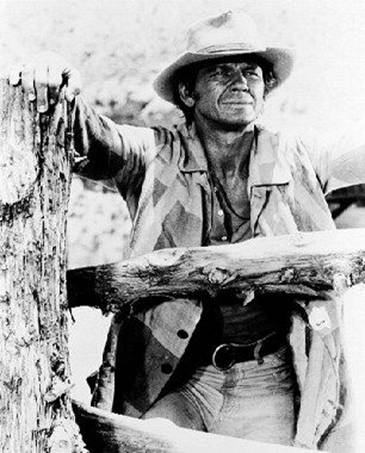
Charles Bronson (1921-2003), son of a Lithuanian-Pennsylvanian
coal miner, was born in Ehrenfeld, Pennsylvania, USA
American actor Charles Bronson claimed to have spoken no English at home during his childhood in Pennsylvania. Though he managed to complete high school, it was expected that Bronson would go into the mines like his father and many brothers. Experiencing the world outside Pennsylvania during World War II service, however, Bronson came back to America determined to pursue an art career. While working as a set designer for a Philadelphia theater troupe, Bronson played a few small roles and almost immediately switched his allegiance from the production end of theater to acting.
- Bookmark :
- Digg
- del.icio.us
- Stumbleupon
- Redit it
- Posted by - (1) Comment
Movie Star Charles Bronson (1921-2003)
Son of a Lithuanian
coal miner

Charles Bronson (1921-2003), son of a Lithuanian-Pennsylvanian
coal miner, was born in Ehrenfeld, Pennsylvania, USA
American actor Charles Bronson claimed to have spoken no English at home during his childhood in Pennsylvania. Though he managed to complete high school, it was expected that Bronson would go into the mines like his father and many brothers. Experiencing the world outside Pennsylvania during World War II service, however, Bronson came back to America determined to pursue an art career. While working as a set designer for a Philadelphia theater troupe, Bronson played a few small roles and almost immediately switched his allegiance from the production end of theater to acting. After a few scattered acting jobs in New York, Bronson enrolled in the Pasadena Playhouse in 1949. By 1951, he was in films, playing uncredited bits in such pictures as The People Against O'Hara (1951); You're in the Navy Now (1952), which also featured a young bit actor named Lee Marvin; Diplomatic Courier (1952); Bloodhounds of Broadway (1952), as a waiter(!); and The Clown (1953). When he finally achieved billing, it was under his own name, Charles Buchinsky (sometimes spelled Buchinski). His first role of importance was as Igor, the mute granite-faced henchman of deranged sculptor Vincent Price in House of Wax (1953). The actor was billed as Charles Bronson for the first time in Drum Beat (1954), although he was still consigned to character roles as Slavs, American Indians, hoodlums, and convicts. Most sources claim that Bronson's first starring role was in Machine Gun Kelly (1958), but, in fact, he had the lead in 1958's Gang War, playing an embryonic version of his later Death Wish persona as a mild-mannered man who turned vengeful after the death of his wife. Bronson achieved his first fan following with the TV series Man With a Camera (1959), in which he played adventurous photojournalist Mike Kovac (and did double duty promoting the sponsor's camera products in the commercials). His best film role up until 1960 was as one of The Magnificent Seven (1960), dominating several scenes despite the co-star competition of Yul Brynner, Steve McQueen, Eli Wallach, and others. Most of Bronson's film roles after Seven remained in the "supporting-villainy category," however, so, in 1968, the actor packed himself off to Europe, where American action players like Clint Eastwood and Lee Van Cleef were given bigger and better opportunities. Multiplying his international box-office appeal tenfold with such films as Guns for San Sebastian (1967), Once Upon a Time in the West (1968), Cold Sweat (1970), and The Valachi Papers (1971), Bronson returned to Hollywood a full-fledged star at last. His most successful films of the 1970s were Death Wish (1974) and its sequels, a series of brutal "vigilante" pictures which suggested not so subliminally that honest people would ultimately have to dole out their own terminal justice to criminals. In many of his '70s films, Bronson co-starred with second wife Jill Ireland, with whom he remained married until she lost her fight against cancer in 1990. Bronson's bankability subsequently fell off, due in part to younger action stars doing what he used to do twice as vigorously, and because of his truculent attitude toward fans. He did little but television work after 1991's The Indian Runner (Sean Penn's directorial debut), with Death Wish 5: The Face of Death (1994) his only feature since. Bronson's onscreen career would soon draw to a close with his role as law enforcing family patriarch Paul Fein in the made-for-cable Family of Cops series.On August 30, 2003 Charles Bronson died of pneumonia in Los Angeles. He was 81. ~ Hal Erickson, Rovi
- Bookmark :
- Digg
- del.icio.us
- Stumbleupon
- Redit it
![]()
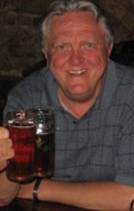
Bernard Terway
Very nice article about a group I was proud to be a member of. There are many such groups throughout the US and many of them were founded where Lithuanians traditionally settled. There are other groups in places that one would not expect them to be. For example the Lithuanian American communities in Houston and San Antonio Texas.
Bernard Terway
- Bookmark :
- Digg
- del.icio.us
- Stumbleupon
- Redit it
It gave me so many experiences singing, dancing, making friends and making eggs and straw ornaments
- Posted by - (0) Comment
![]()
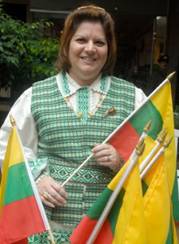
Karen Domalakes
The group also had a Jr. K of L when I was a child in the 1980s. We danced in the area as well as at the Sukiu Svente in Cleveland years ago. It gave me so many experiences singing, dancing, making friends and making eggs and straw ornaments. It led me to experience four Lithuanian summer camps and find my favorite vacation spot, Lithuania. Most of all it keeps me close to my family and faith as we share these traditions and memories. Thanks for the article!
Karen Domalakes
- Bookmark :
- Digg
- del.icio.us
- Stumbleupon
- Redit it
Very Nice Article. Thank You for All you do!
- Posted by - (0) Comment
- Bookmark :
- Digg
- del.icio.us
- Stumbleupon
- Redit it
This was a great article.
I, too am proud to be a member of the Knights of Lithuania (56 years). It would be great to have a council in Texas.
Phyllis Gendreau
- Bookmark :
- Digg
- del.icio.us
- Stumbleupon
- Redit it
- Posted by - (0) Comment
VilNews Forum

Viktorija Ruškulienė I was a participant in the similar Wash. DC protest in 1989. I have tons of pictures, if you are interested.

Aage Myhre With your story... OK?

Viktorija Ruškulienė Well, I do not have much to say. But I will think about it...

Aage Myhre Of course you have a lot to say... All you guys have,,, And it's now time to tell... :)

Tony Mazeika I was part of a Baltic delegation of 14 including the Baltic American Freedom League that had a White House conference with Pres. H. Bush & his top advisers April 1990 that argued for the immediate recognition of the newly established free government headed by V. Landsbergis. We have a complete record of that 2 hour conference. The President hesitated and we had to wait for one more bloody year before the US gave its full diplomatic recognition to the restored sovereign democratic nation of Lithuania. Major public affairs, media, and Congressional efforts were undertaken in the US between 1990-1991 to supports restoration of Baltic independence. There is comprehensive story about those efforts that need to be told.
- Bookmark :
- Digg
- del.icio.us
- Stumbleupon
- Redit it
VilNews e-magazine is published in Vilnius, Lithuania. Editor-in-Chief: Mr. Aage Myhre. Inquires to the editors: editor@VilNews.com.
Code of Ethics: See Section 2 – about VilNews. VilNews is not responsible for content on external links/web pages.
HOW TO ADVERTISE IN VILNEWS.
All content is copyrighted © 2011. UAB ‘VilNews’.

 Click on the buttons to open and read each of VilNews' 18 sub-sections
Click on the buttons to open and read each of VilNews' 18 sub-sections 






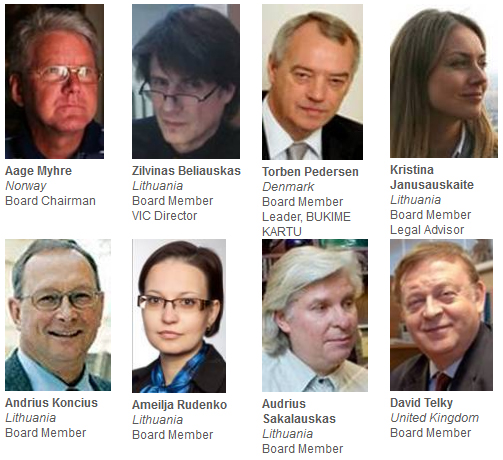










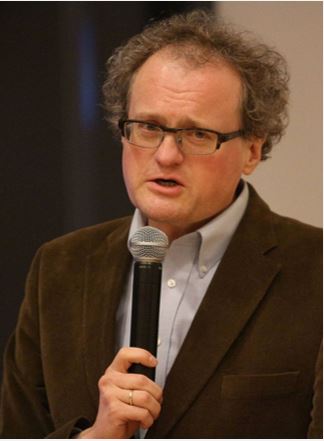
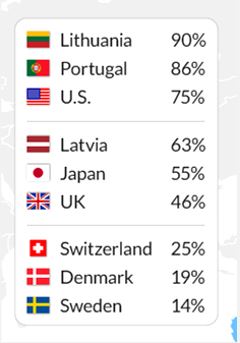
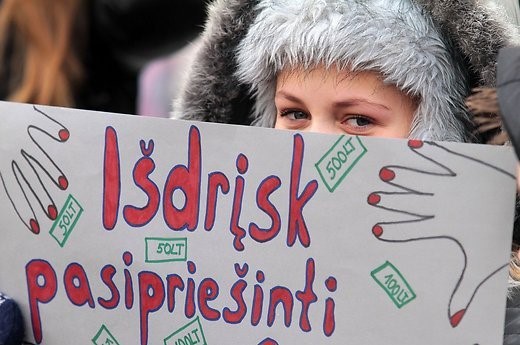




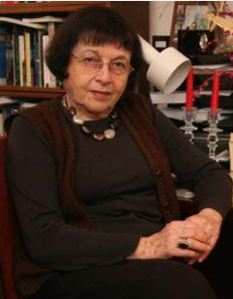
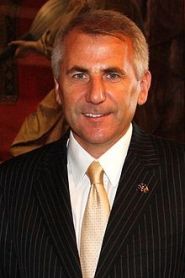
.jpg)
